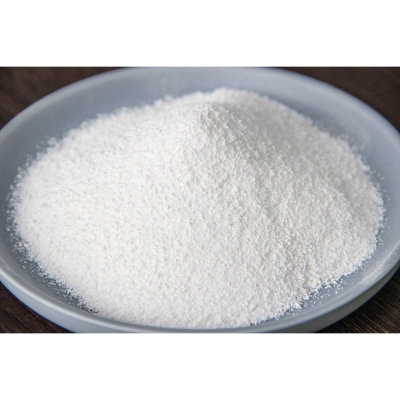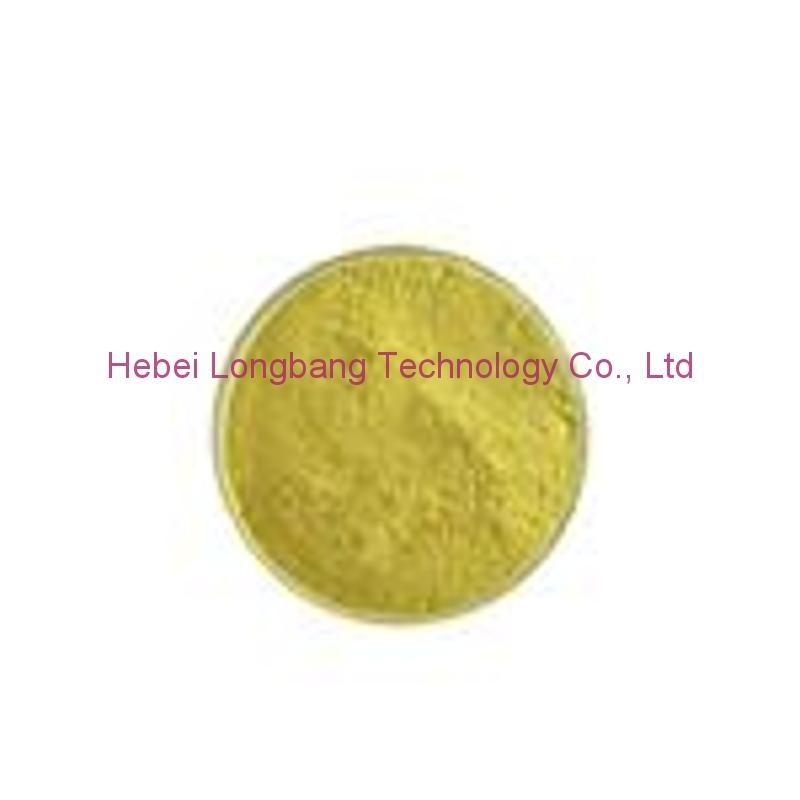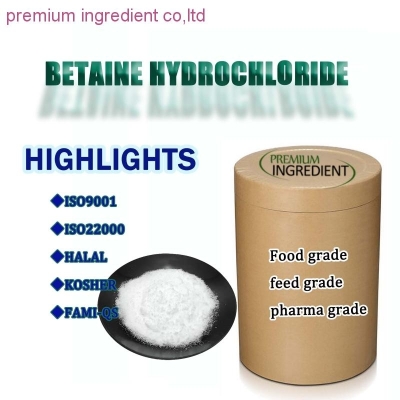The characteristics of different enzyme synthases and their application in feed production.
-
Last Update: 2020-07-29
-
Source: Internet
-
Author: User
Search more information of high quality chemicals, good prices and reliable suppliers, visit
www.echemi.com
The application effect of feeding enzyme preparation is now unquestionable, it can not only improve digestion and utilization rate, improve the production performance of livestock and poultry, but also reduce the nitrogen and phosphorus inthereure of livestock and poultry, protect the soil from pollution, so the feeding enzyme preparation as a kind of high-efficiency, non-toxic side effects and environmentally friendly "green", in the 21st century will have a very broad application prospectsiENalthough the role of enzyme preparation has been recognized, but because of the particularity of enzyme preparation production, such as the use of different strains, different production methods (solid fermentation or liquid fermentation), the final product measurement conditions of the huge differences to the vast number of enzyme users have brought a certain degree of difficulty, it is difficult to simply judge from the surface which enzyme preparation products are suitable for themselvesSo we should at least consider the following factors when deciding to use the type of enzyme: iENmust first take into account the composition of yes, mainly the following factors: the type of grain and protein, the ratio of grains and proteins, and the level of anti-nutrient factors in grains and proteinsThe second factor taking into account is the animal itself, especially the age factor and varietyiENgenerally recommended combinations of these: using xylitose in alacite-rich;iENdifferent enzymes and their substrate characteristics iENa major feature of the enzyme action is the specificity of the substrate, so first of all, there should be a preliminary understanding of the substrate of its actionAt present, domestic enzyme preparations mainly include the digestion of non-starch polysaccharides enzymes, amylase, protease and so onThe characteristics of the above non-starch polysaccharides and their corresponding substrates are described in this sectioniENnon-starch polysaccharides NSP, which consists mainly of xylitose, arabic polysaccharides, semi-lactose and glutaine and glucan, which have a strong anti-nutritional effectThese anti-nutritional effects severely affect these use, and Arabinoxylans AX are the leading anti-nutrient factors in wheat, bare wheat, barley and processed by-products usedIn barley and oats, the anti-nutrient factor is mainly composed of beta-glucan and arabic xylitoseiEN 1.1 alacite iEN alacite is the most important ingredient in NSP Alacitaly is a skeleton structure of xylitose molecules connected by beta-(1,4) bonds The linear long chain structure of this xylitomolecule molecule is its basic skeleton Because of the different sources, the linear branching chain formed by different components may also be connected to the straight chain iEN is best known for its increased stickiness, mainly because of its powerful water absorption Increased viscosity makes mixing with digestive enzymes and bile salts very difficult, and the absorption efficiency of nutrients is greatly affected, along with increased microbial activity, and there is reason to believe that this is also an important reason for the poor growth performance of high-level Arabic xylitose-food feeding animals One possible explanation is that these microorganisms compete with their hosts for nutrients Intestinal microbes can also transport bile salts that play an important role in fat digestion In addition, the changes in intestinal morphology are also an important anti-nutritional effect of AX, which reduces the absorption of the intestinal tract Finally, AX's water absorption capacity also leads to increased viscosity and moisture in the excreta the second important anti-nutrition effect of iEN AX is that it forms a layer of encapsulation as a component of the cell wall, encased in a large number of well-used nutrients such as starch and protein, or chemical bonds between the branch structure and nutrients These wrapped nutrients will not be fully utilized by the animal's intestines iEN 1.2 xylitose iEN is the most used enzyme, from the source of the fungal xylitose and bacterial xylitose, from the way of action, but also includes exciligate lygtoida and endogenous xylitose iEN internal cut-out 1,4-beta-xylitose that breaks down xylitose polymers into short chains This internal cut activity quickly reduces the viscosity of the ate and releases the nutrients that are wrapped Therefore, this enzyme is the most important enzyme to eliminate the anti-nutritional effects of AX Excheic xylitose only works at the end of AX iEN 1.3 beta-glucan iEN beta-glucan is a polymer that d-glucose is connected by the beta-(1-3) and beta-4 bonds Because they are water-soluble, they do not result in too complex structures iEN low concentrations of beta-glucan seofs only act directly with water molecules to retain moisture But when the concentration increases, it reacts with each other to form a mesh structure (gel) Therefore, high concentrations of beta-glucan can lead to increased viscosity of the intestinal content The anti-nutritional effects of increased viscosity have been elaborated in alacite iEN 1.4 beta-glucanase: iEN similar to algedoxase, to eliminate the viscosity effect of beta-glucan, it is necessary to have its long chain hydrolyzed into a shorter short chain The most effective method is to use endocetic beta-glucanase iEN 1.5 cellulose iEN cellulose is a linear macromolecular substance made up of D-glucose combined with beta-1, 4 glycoside bonds Each molecule cellulose contains 800 - 1200 glucose molecules, which can easily form hydrogen bonds within the molecular chain, between the bonds and between the molecular chains and the surface molecules Common livestock such as grains, beans, wheat and pastures contain large amounts of cellulose and are often combined with hemicellulose, pectin and other substances In addition to ruminants can use a portion of cellulose, single-stomach animals such as, etc can not use cellulose iEN 1.6 cellulase iEN cellulase is a complex enzyme consisting of a variety of hydrolyzy enzymes, which are divided into three main categories according to their enzyme functions: glucolyse endoscose, glucotose extrosozyase and beta-glucosalyse Cellulose hydrolysised under the synergy of these 3 enzymes iEN cellulase can break the walls of plant cells to expose the protoplasm in the cell and further degrade it The digestion rate of intracellular substances is improved, thus effectively improving the effective energy value, which can supplement the deficiency of endogenous enzymes in herbivores Adding cellulase agents can significantly improve the digestion utilization rate of coarse fibers in herbivores In addition, for single-gastric animals, cellulase improves the digestive tract environment and increases acidity to activate the stomach protease Eliminate anti-nutrient factors, reduce the viscosity of materials, promote the diffusion of endoenzymes, increase the digestion and absorption of nutrients iEN 1.7 glycosaciEN glycoulita, or semi-lactose glycoulita, which is high in the pie meal and higher in soy meal than in other commonly used iEN for poultry and for poultry, glucolyse reduces the digestion rate of the meal, even a very low concentration of glycous sugar reduces the absorption of glucose in the intestines, resulting in reduced carbohydrate metabolism by disturbing the secretion of insulin and the production of insulin-like growth factors It also reduces the absorption of fats and amino acids, reducing the absorption of water and resulting in increased fecal moisture content iEN 1.8 glycous polysesome iEN glycoglutase is a type of hemicellucellase, it can effectively break down the glycosalyse in the dross, although glucosugar can not be directly absorbed by the animal body, but can participate in the body's neuroendocrine, affecting metabolism The roles of glycous polysaccharides include: improving the energy utilization of the pie and reducing the degree of variation in animal weight And the smaller the animal weight, the easier the role of the enzyme is reflected, can effectively block bacteria and parasites on the intestinal attack, improve animal health level iEN 1.9 pectin iEN pectin is a polysaccharide component found in plant tissues, mainly composed of semi-lactose aldehyde acid and its methyl esters, which together with cellulose on the plant's structural effect iEN 1.10 pectin enzyme iEN pectin astrosterase, hydrolysase and lysase enzyme three components, respectively, to the pectin to solve ester, hydrolysis, lysis, to produce semi-lactolic aldehyde acid and oligopoly semi-lactose aldehyde acid, unsaturated semi-lactose acid and polysemiaxalyse, and finally break down plant structure, release nutrients iEN conclusion: iEN enzyme preparation in China is still in the initial stage of development, there are still many problems need to be solved by enterprises and production enterprises together, but the use of enzyme preparations in the future will inevitably become the first choice of enterprises The emergence of xylolyse, beta-glucanase, cellulase and glucolysase provides a new choice for users, and it is certain that it will certainly be the direction of the development of enzymes iEN the application effect of the forage formulation is now unquestionable, it can not only improve digestion and utilization rate, improve the production performance of livestock and poultry, but also reduce the nitrogen and phosphorus excretion in livestock and poultry, protect the soil from pollution, so the feeding enzyme as a kind of high-efficiency, non-toxic side effects and environmentally friendly "green", in the 21st century will have a very broad application prospects iEN although the role of enzyme preparation has been recognized, but because of the particularity of enzyme preparation production, such as the use of different strains, different production methods (solid fermentation or liquid fermentation), the final product measurement conditions of the huge differences to the vast number of enzyme users have brought a certain degree of difficulty, it is difficult to simply judge from the surface which enzyme preparation products are suitable for themselves So we should at least consider the following factors when deciding to use the type of enzyme: iEN must first take into account the composition of yes, mainly the following factors: the type of grain and protein, the ratio of grains and proteins, and the level of anti-nutrient factors in grains and proteins The second factor taking into account is the animal itself, especially the age factor and variety iEN generally recommended combinations of these: using xylitose in alacite-rich;iEN different enzymes and their substrate characteristics iEN a major feature of the enzyme action is the specificity of the substrate, so first of all, there should be a preliminary understanding of the substrate of its action At present, domestic enzyme preparations mainly include the digestion of non-starch polysaccharides enzymes, amylase, protease and so on The characteristics of the above non-starch polysaccharides and their corresponding substrates are described in this section iEN non-starch polysaccharides NSP, which consists mainly of xylitose, arabic polysaccharides, semi-lactose and glutaine and glucan, which have a strong anti-nutritional effect These anti-nutritional effects severely affect these use, and Arabinoxylans AX are the leading anti-nutrient factors in wheat, bare wheat, barley and processed by-products used In barley and oats, the anti-nutrient factor is mainly composed of beta-glucan and arabic xylitose iEN 1.1 alacite iEN alacite is the most important ingredient in NSP Alacitaly is a skeleton structure of xylitose molecules connected by beta-(1,4) bonds The linear long chain structure of this xylitomolecule molecule is its basic skeleton Because of the different sources, the linear branching chain formed by different components may also be connected to the straight chain iEN is best known for its increased stickiness, mainly because of its powerful water absorption Increased viscosity makes mixing with digestive enzymes and bile salts very difficult, and the absorption efficiency of nutrients is greatly affected, along with increased microbial activity, and there is reason to believe that this is also an important reason for the poor growth performance of high-level Arabic xylitose-food feeding animals One possible explanation is that these microorganisms compete with their hosts for nutrients Intestinal microbes can also transport bile salts that play an important role in fat digestion In addition, the changes in intestinal morphology are also an important anti-nutritional effect of AX, which reduces the absorption of the intestinal tract Finally, AX's water absorption capacity also leads to increased viscosity and moisture in the excreta the second important anti-nutrition effect of iEN AX is that it forms a layer of encapsulation as a component of the cell wall, encased in a large number of well-used nutrients such as starch and protein, or chemical bonds between the branch structure and nutrients These wrapped nutrients will not be fully utilized by the animal's intestines iEN 1.2 xylitose iEN is the most used enzyme, from the source of the fungal xylitose and bacterial xylitose, from the way of action, but also includes exciligate lygtoida and endogenous xylitose iEN internal cut-out 1,4-beta-xylitose that breaks down xylitose polymers into short chains This internal cut activity quickly reduces the viscosity of the ate and releases the nutrients that are wrapped Therefore, this enzyme is the most important enzyme to eliminate the anti-nutritional effects of AX Excheic xylitose only works at the end of AX iEN 1.3 beta-glucan iEN beta-glucan is a polymer that d-glucose is connected by the beta-(1-3) and beta-4 bonds Because they are water-soluble, they do not result in too complex structures iEN low concentrations of beta-glucan seofs only act directly with water molecules to retain moisture But when the concentration increases, it reacts with each other to form a mesh structure (gel) Therefore, high concentrations of beta-glucan can lead to increased viscosity of the intestinal content The anti-nutritional effects of increased viscosity have been elaborated in alacite iEN 1.4 beta-glucanase: iEN similar to algedoxase, to eliminate the viscosity effect of beta-glucan, it is necessary to have its long chain hydrolyzed into a shorter short chain The most effective method is to use endocetic beta-glucanase iEN 1.5 cellulose iEN cellulose is a linear macromolecular substance made up of D-glucose combined with beta-1, 4 glycoside bonds Each molecule cellulose contains 800 - 1200 glucose molecules, which can easily form hydrogen bonds within the molecular chain, between the bonds and between the molecular chains and the surface molecules Common livestock such as grains, beans, wheat and pastures contain large amounts of cellulose and are often combined with hemicellulose, pectin and other substances In addition to ruminants can use a portion of cellulose, single-stomach animals such as, etc can not use cellulose iEN
This article is an English version of an article which is originally in the Chinese language on echemi.com and is provided for information purposes only.
This website makes no representation or warranty of any kind, either expressed or implied, as to the accuracy, completeness ownership or reliability of
the article or any translations thereof. If you have any concerns or complaints relating to the article, please send an email, providing a detailed
description of the concern or complaint, to
service@echemi.com. A staff member will contact you within 5 working days. Once verified, infringing content
will be removed immediately.







